Easton, Maryland, Is A Small Town With Top-Tier Dining And Hospitality
Small-town charm meets big-city dining in Easton, Maryland.
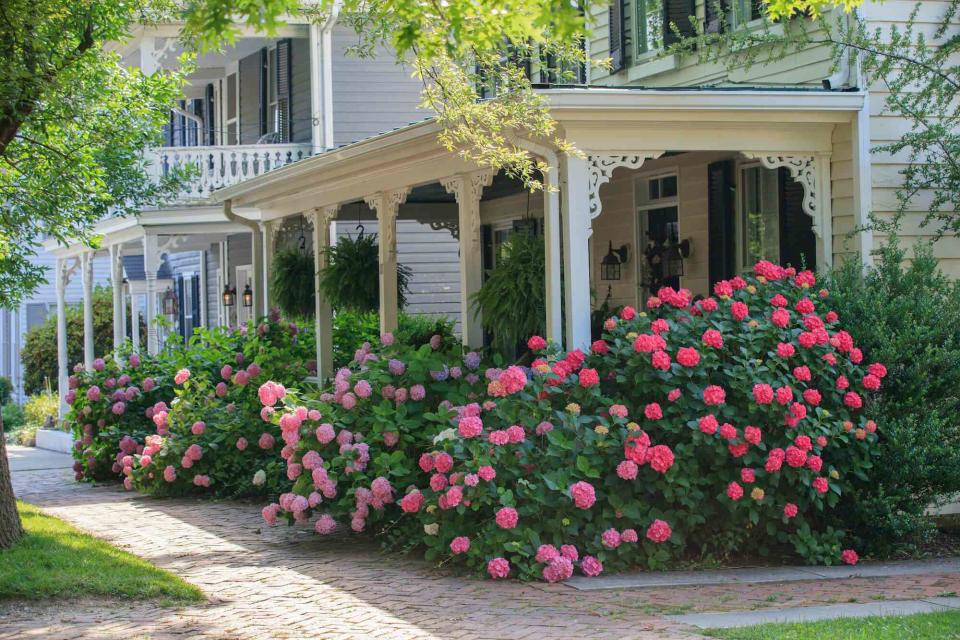
What’s one benefit of living in a larger city? Having a wide variety of top-notch eateries to choose from without having to travel far for them. It’s not often that you find smaller towns with a bustling food scene, but that’s not the case in Easton, Maryland, where a culinary revitalization is taking place that’s making the town a favorite weekend getaway — or new home — for big-city dwellers coming from New York, D.C., and Philadelphia.
About 70 miles east of Washington, D.C. on Maryland’s Eastern Shore, you’ll find Easton, Maryland: a small seaside town on the rise thanks to the efforts of Bluepoint Hospitality, which owns and operates numerous restaurants and businesses throughout town. In the 1800s, Maryland’s Eastern Shore was anchored by Easton. It grew quickly and became the largest and most important town on the Eastern Shore. But with growth in neighboring areas and increased tourism in those places, specifically on the waterfront like Oxford and St. Michaels, Easton began to wane. Historical buildings were empty until the 1980s, when there was a push for transformation.
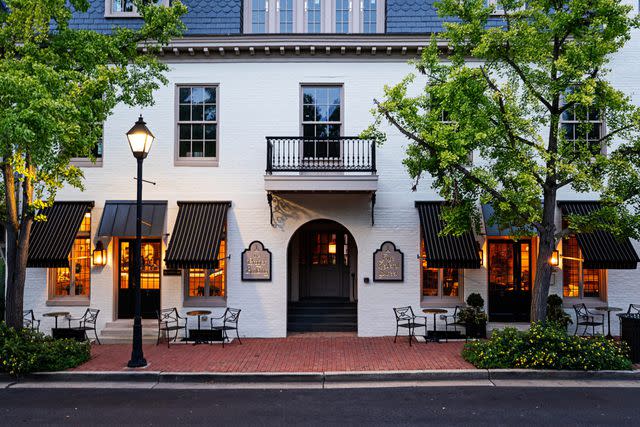
Scott Suchman
The exterior of BluepointEaston’s renaissance is led by efforts from local entrepreneur Paul Prager, the founder and CEO of Beowulf Energy and Bluepoint Hospitality, who first visited the area when he was in the Naval Academy in nearby Annapolis. “This area became my respite from military school and where I would escape to whenever I could,” Prager says. Later, while raising a family in New York City, Prager and his wife bought a farm in Talbot County near Easton, where they spent weekends, holidays, and summers. During the pandemic, Prager and his wife, now empty nesters, relocated here permanently.
In days past, Easton’s downtown area was thriving. Merchants filled every storefront and streets were bustling with life. People chose to live here rather than in surrounding big cities. There was a rich arts scene, and the economy was booming. It was the type of town that Prager wanted to see alive again. “Easton has great architecture and a rich history as a modern municipality,” he says. “My vision was (and remains) to restore its original vibrancy by creating opportunities for young people with great schools, more residences in town, and a rich arts scene.” Prager began revitalization efforts in 2014, and now owns about 40% of commercial space in town.
But how did Bluepoint successfully revitalize a small town and attract top talent from the bigger cities? Sourcing local talent and adding in the mass exodus from cities that followed the pandemic. Prager notes that as countless restaurants closed during the pandemic, Easton created a new opportunity for hospitality professionals to create something new and leave the big city. “Our rapid growth and success have attracted professionals from many cities,” he says. “This offers a unique learning opportunity for both our transplants and the brilliant homegrown team that’s been with us since inception. Education is at the heart of what we do, so learning from one another has never presented an issue.”
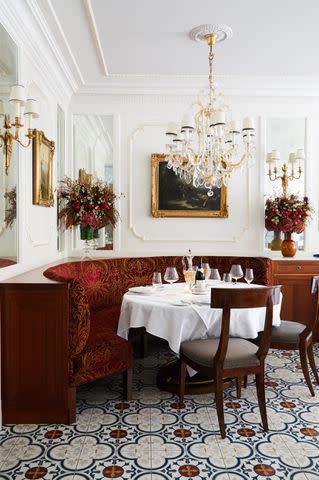
Nicole Franzen
The interior of Bas Rouge includes ornate details that add an extra flairPlan Your Visit
A must while in Easton is Bluepoint’s Bas Rouge, which brings classic, European fine dining and old-school French hospitality to the spotlight under the watchful eye of executive chef Harley Peet and chef de cuisine Phil Lind. It’s the type of place you expect in New York, Boston, or D.C., but never a small town like Easton. Showstoppers include Osetra caviar and lump crab spatzle, plus guéridon service from an antique silver trolley for a touch of tableside entertainment. On my visit, I was intrigued to spot a special Dover sole on the menu, and my server informed me it was caught in Brittany, France, only two days prior and sold only to four eateries in the U.S., including French Laundry in Yountville, California and Le Bernardin in New York. Paired with a sauvignon blanc from France’s Loire Valley, I again questioned whether I was really in Maryland or a booming metropolis.
Down the street from Bas Rouge is the intimate and Scottish-inspired lounge and bar, The Stewart, specializing in single-malt scotch and vintage champagnes. Dark wooden furniture combined with gilt-framed oil paintings of Highland scenes and refurbished 18th century period furniture create a cozy atmosphere that’s perfect for post-dinner cocktails or a special night out. Centering the room is an 18th century walnut and brass trumeau chimney, flanked by custom rawhide banquettes and custom George Smith chairs in tweeds and checks to create a cozy atmosphere for an intimate night out or post-dinner drinks. A seat near the fire is a pro move during cold winter months, as is a selection from the $700,000 scotch program. Various areas of Scotland are represented in the program, including a 1954 Glen Grant and a Gordon & MacPhail Speymalt Macallan from 1950. Vintage champagnes are abundant, too, including a Dom Perignon from 2000 and Krug d’Ambonnay from 1995. I enjoyed my champagne in a vintage 1917 glass, because Prager believes fine china should be enjoyed, not put away in a cabinet, and paired it with the braised short rib grilled cheese, truffle potatoes, and seasonal, purple Brussels sprouts prepared by the under-the-radar talen of chef de cuisine David Kneller.
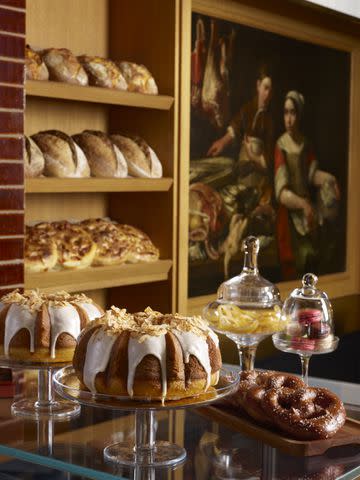
Francine Zaslow
Prager’s gastronomic enterprises continue to sprawl throughout downtown, including The Wardroom, an epicurean market, wine shop, and restaurant offering a handful of homemade pasta dishes, charcuterie, and gourmet sandwiches. It even has its own cheesemonger, Red, who works with local farmers and world-class cheesemakers to create a cheese program rivaling the best in the country. The Wardroom even has its own cheese cave, plus 24 wines by the glass and over 1,400 bottled varieties. Within walking distance is the first of the Bluepoint establishments conceived, Sunflowers & Greens, a salad bar specializing in the finest local and national artisanal produce and meats. Here, I chose my own salad from an array of ingredients, but you can also select from the list of signature salads and daily specials. There’s also tiny Roma Alla Pala, specializing in Roman-style takeaway pizza; Weather Gage for coffee and boulangerie-style baked goods; Bumble Bee Juice with healthy, cold-pressed juices; and Bonheur Pie and Ice Cream, which is fashioned after a Chanel jewel box room. Ice cream selections rotate and include gingerbread, lemon-curd oat milk, maple walnut, and black raspberry.
Beyond the culinary scene, Prager is slowly developing other storefronts in town for retail spaces. Benjamin is a graceful boutique that gives way to Prager’s love for fine china and is considered one of the best collections of porcelain, crystal, and silver in the U.S. Shop Nymphenburg goods from Bavaria, plus Viennese and German glass, silver, and crystal. Nearby Flying Cloud Booksellers specializes in fiction and non-fiction bestsellers, biographies, literary classics, children’s literature, and more. Its sister spot, Flying Cloud Fine Art Posters, recently opened next door with 800 original vintage posters of masterworks from the Golden Age.
Prager and Bluepoint plan to continue polishing Easton and creating a vacation-worthy destination with more eateries and entertainment in the works. The recently restored Ebenezer Theater hosts concerts featuring Grammy Award-winning artists. Coming this winter is the sweetest of shops, P. Bordier, a creperie and patisserie all in one.
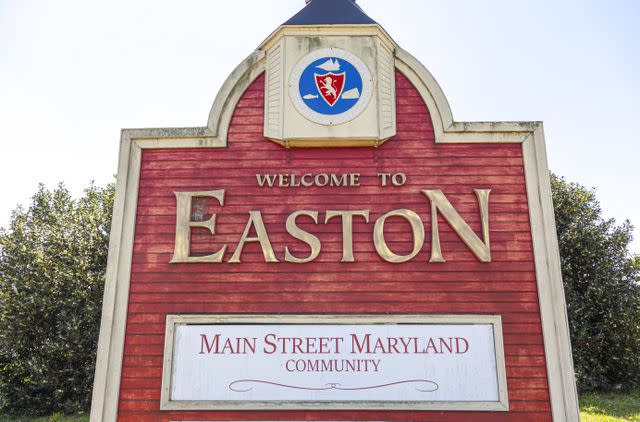
Getty
Getting There
Easton is about an hour and a half from Washington, D.C., and an hour and 15 minutes from Baltimore. The downtown area is very walkable, but if you’re looking to explore surrounding areas such as the Blackwater National Wildlife Refuge or the Harriet Tubman Underground Railroad State Park and Visitor Center, you’ll need to rent a car.
For more Southern Living news, make sure to sign up for our newsletter!
Read the original article on Southern Living.

